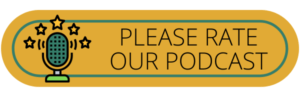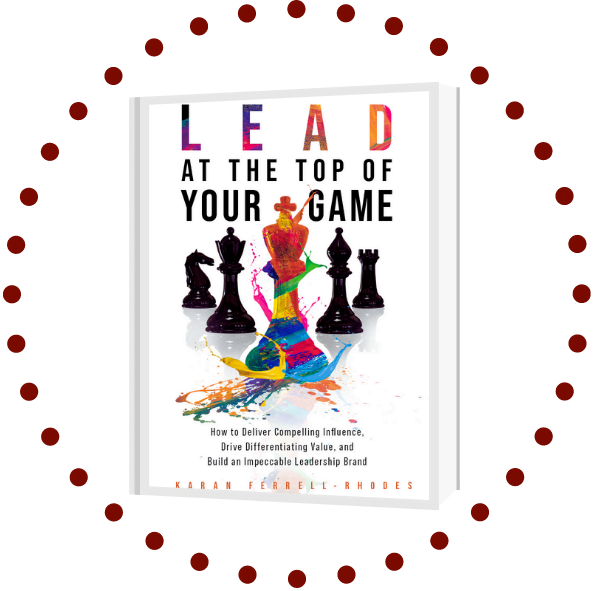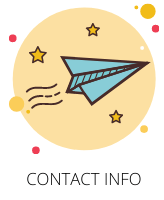IN THIS EPISODE, KARAN FERRELL-RHODES INTERVIEWS LAURA AZZARELLA.
Laura Azzarella, co-founder of Applied Potential Solutions, shares her journey from media production to HR, emphasizing the importance of leveraging technology, particularly AI, to automate administrative tasks and optimize HR processes. She highlights the need for proper onboarding and communication with vendors to ensure successful integrations. Laura also stresses the importance of HR leaders being AI-savvy and not being afraid to experiment with technology.
Laura Azzarella is the co-founder of Applied Potential Solutions, a tech-forward HR consultancy that helps businesses optimize talent strategies through strategic technology integration. Led by Laura Azzarella, the firm specializes in implementing HR systems, leveraging AI and technology to automate administrative tasks, and helping organizations develop more efficient HR practices. Their services range from process improvement to comprehensive HR technology solutions.
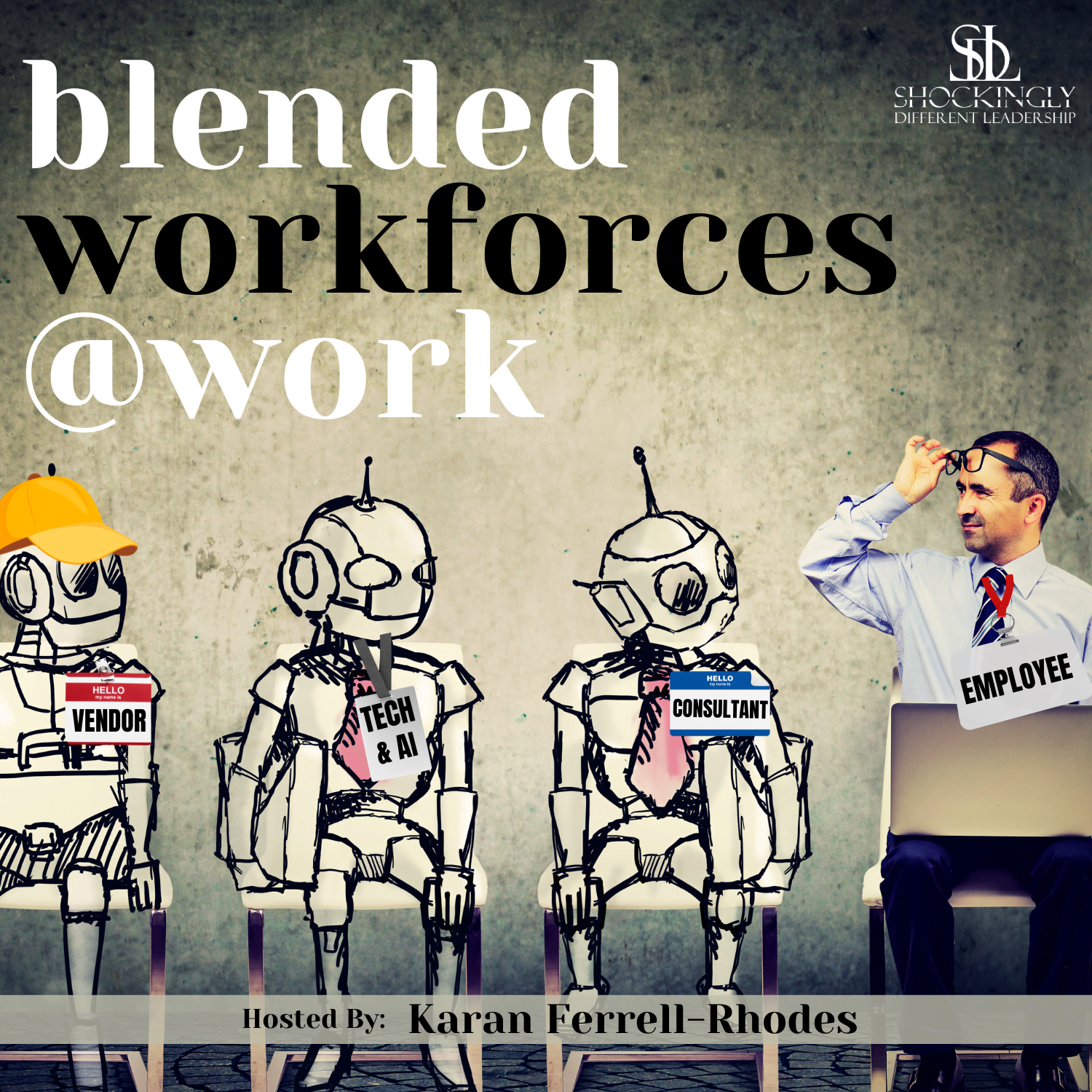
Posted by
SDL Media Team
Rather view our video podcast?
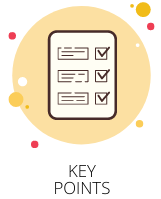
WHAT TO LISTEN FOR:
- How did Laura’s diverse career path lead her to founding Applied Potential Solutions?
- What technology strategies can HR teams use to become more strategic and efficient?
- How is AI changing the landscape of HR processes and talent management?
- What challenges do organizations face when integrating external talent or consultants?
- Why is “courageous agility” important in navigating technological and workplace changes?
- How can companies better support their HR leaders in adopting new technologies?
- What are the limitations of AI in HR, and how should professionals approach its implementation?
- How can external consultants more effectively integrate into an organization’s culture and processes?
“Do not be afraid of technology.”
FEATURED TIMESTAMPS:
[2:29] Laura’s background and hobbies
[5:00] Laura’s career journey before founding Applied Potential Solutions
[7:20 ] Leveraging technology to optimize HR processes, & using AI to automate administrative tasks
[13:03] How HR is gaining a stronger seat at the table after COVID-19 demonstrated its strategic value
[19:27] Advice for external vendors: Don’t rush implementations, take time for proper onboarding, and understanding the organization’s context
[21:44] Technology evolves, and AI won’t replace humans but will automate repetitive tasks
[25:23] Signature Segment: Laura’s entry into the LATTOYG Playbook: Don’t be afraid of technology
[29:24] Signature Segment: Laura’s LATTOYG Tactic of Choice: Courageous Agility
[30:37] How to reach Laura
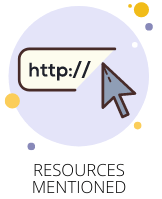
ABOUT LAURA AZZARELLA:
Laura Azzarella is a strategic HR consultant, fractional CHRO, and the co-founder of Applied Potential Solutions, LLC. With over 16 years of experience across employee relations, workforce analytics, compliance, and leadership development, she advises growing businesses and HR leaders on building smart, people-first systems that work in the real world. She also serves as the President-Elect of the Buffalo Niagara Human Resources Association, a SHRM affiliate.
LINKS FOR LAURA:
- Website: https://appliedpotentialsolutions.com/
- LinkedIn: https://www.linkedin.com/in/laura-azzarella/
ADDITIONAL RESOURCES FOR YOU:
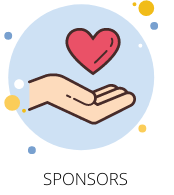
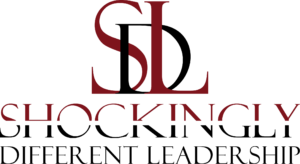
Episode Sponsor
SDL is the go-to firm companies trust when needing to:
- supplement their in-house HR teams with contract or interim HR experts
- implement leadership development programs that demonstrate an immediate ROI and impact on the business
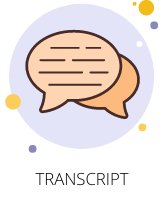
Episode 44 | Fractional, Functional and Fully Aligned Workforces with Laura Azzarella
Laura Azzarella 00:00
I think being able to advise that, yes, HR is a cost line, we do not create value as far as product and sales, but what we do is we allow the organization to look at data, and if we’re freed up and allowed to be a little bit more strategic, what we can anticipate is the turnover rate, the absenteeism rate, we can be doing active things to preempt engagement issues.
Karan Rhodes 00:01
Blended workforces are one of the hottest talent strategies today, where employers are using a mix of traditional employees with external resources like independent contractors, coaches, consultants, vendors, and technology solutions, all in order to enhance competitiveness, ensure cost flexibility, and expedite business goals. But how are the successful companies infusing blended workforces into their business strategy? And what are the critical success factors and pitfalls to avoid during implementation? And on the flip side, what does it really take for suppliers to improve their chances of finding and landing contract opportunities? The devil is in the details, my friends! I’m your host, Karan Ferrell Rhodes, and it’s time to get smarter about Blended Workforces at Work!Hello, my superstars. This is Karan, and welcome to another episode of the blended workforces at work podcast. We have an absolutely tremendous guests on today’s show. We’re thrilled to the moon and back to feature this Laura Azzarella. And Laura is the co founder of Applied Potential Solutions. And applied potential solutions is a tech forward HR consultancy that really helps businesses lead, hire and grow their teams. Now, Laura and her team, you know, offer a variety of solutions, of which I’ll let her expound on shortly, but her firm is a prime example of external talent, of the external talent component of blended workforces, and how they help support clients in their talent needs to help get work done within their organizations. So welcome to the show, Laura.
Laura Azzarella 01:53
I’m so excited to be here. Karan, thank you.
Karan Rhodes 01:56
Oh, we’re just absolutely thrilled to have you as well. I can’t wait to talk more about applied potential solutions. Yours and our firm are similar in some veins, but different than others, so I can’t wait to compare notes, but before we go deeply in that, you know we always love to learn just a tad more about our guests. So for just as much as you feel comfortable, would you mind sharing a sneak peek into your life outside of work?
Laura Azzarella 02:29
Absolutely. So before getting into HR, I was actually studying media production. So I love audio, visuals, a lot of artistic sort of endeavors, and I am a consummate nerd, those things kind of fold one to the other. So I’m talking 1999 learning HTML to create video game like walk through websites. I still play video games to this. I’m super passionate about this stuff because I just I love to know a lot about a lot and strategy and just the ability to apply my skills in any situation. So huge nerd for life.
Karan Rhodes 03:01
Well, you have a fellow. I don’t know if this is a term, but sister and nerdness right here with me as well. Especially, I won’t say I’m a technology Pro, but I’m a power user of technology. It couldn’t help me, because 20 year career in incorporated technology companies that kind of rubs off, if you can imagine.
Laura Azzarella 03:26
Yes, ma’am,
Karan Rhodes 03:29
well, fantastic. Thanks so much for sharing that tidbit. So now let’s turn to you and your story a little bit. And I’d love to start with you just sharing maybe a few highlights of the milestones of your career, and then what led you to co found applied potential solutions.
Laura Azzarella 03:49
Absolutely so you know, when I found your podcast, I was so thrilled, because my life has been, for the most part, a lot of blended workforce sort of techniques, so I’ve got a lot of lessons learned from those experiences. So being in human resources, I started in a tech startup here in my my city of Buffalo, New York. And unfortunately, you know, startups kind of wane and wax, and I was laid off, but I decided to pursue HR, got my master’s degree and went into a 24/7 heavy industrial manufacturing startups, state of the art, liner, board, cardboard recycling machine. And there I got to see a lot of blended workforce, sort of capabilities, because we were bringing in consultants here and there to optimize the machine. Things weren’t going really well after startup. You know, we built it to OEM standards, but it’s not necessarily delivering the product that we anticipated. So bringing in consultants, I was able to learn a lot about integration, or lack thereof, into the KPIs metrics and success of the organization. Worked there for a number of years, transitioned over into higher education, which has a lot of opportunities for blended consultants, individuals, where you don’t want necessarily FTE in the head count, so you’ve got a consultant to come in and do one or two really good things, a lot of situations. With payroll and other HRIS or system implementations, worked in the federal government for a bit, and through all of that experience, I really wanted to found an organization that gets it, that sees, you know what, not just another consultant, not just selling my bag of tricks, and then I’m going to leave at the end of the day and not really know whether or not you’ve been successful. So that was really having lived all those experiences and seeing what works and what didn’t, is really what kind of drove my interest in starting this organization.
Karan Rhodes 05:29
Oh, that’s amazing. And so can you also share with us, just at a high level, give us a feel for the suite of services that you offer and how that helps your clients.
Laura Azzarella 05:42
Sure. So being more tech forward, I think it’s it’s a little taboo right now AI, right being able to automate processes and show individuals. So I find a little bit of a sweet spot in working with the Department of one and helping an HR peer optimize their processes by showing just how much AI, even the free version can help them automate some of that, you know, drudgery that they’re kind of experiencing to be more strategic. I don’t see AI as replacing the strategy and the humanness. I see it as just replacing all that administrative work, and there’s a way to do it. I also, you know, just work with organizations to establish best practices, especially from a technology perspective. So implementing HR information systems, I’ve done that several times, payroll and benefit systems, time and attendance and timekeeping systems. So really, just being able to say, you know, I’ve lived through these experiences, this is how, after assessing your organization, this is how I think you’re going to be successful, all the way even to just establishing best practices for talent acquisition, you know, being able to build a couple behavioral based interview questions, based on the job description. We don’t hire off vibes. We have to have a little bit better to make sure the Canada is successful. And then here’s the onboarding launch ramp to make sure that they’re actually successful. So it’s a little bit of, again, being a huge nerd, I cannot help myself. I will not turn down a case. I really want to be able to provide value, and I have that full service of HR expertise, but where I find my sweet spot is leveraging technology to make processes.
Karan Rhodes 07:11
I love that. And you know, of course, this is one of my passions as well. And I first about AI. So I was on a panel probably about a month or two ago, and we were talking about, it was with CHROs and CPOs of organizations, and we were talking about AI. And what I don’t know if the listeners realize, is that most HR leaders did not get quote, unquote, trained in technology over time, but you have had to learn or catch up or know enough to help lead the organization on you know, the people, or the HR tech side, you know, or what have you. And but I agree with you so much that thinking and working holistically with companies like you do in your way, in looking at their business strategies and then help connect that to their people and talent strategies is so important to your point. A lot of HR teams and leaders need assistance with that, because they haven’t historically had to do that on their as I say, catch up now. But that not they haven’t had to do it as much. And one of my passions is also around advising company’s board of directors around their HR governance and oversight. And part of that is them given the support and to heads of HR for the exact things that your company helps them with. There’s not just a reporting of, you know, KPIs, just for board decks or, you know, looking at dashboards. It’s the actual implementation a lot of that. And you’re right, a lot of people needed help. So congratulations on your success so far. That is just…
Laura Azzarella 09:08
Thank you so much.
Karan Rhodes 09:11
And I’m just curious, you know, in maybe some of your more, you know, recent clients, since AI is a buzzword, although, as I always tell my listeners and me coming from, you know, over Gosh, 15, I’m telling my age now, 15 years and 17 years in high tech. AI has been around forever. Actually, it has advanced over time, but it’s been forever. I’m sorry, go ahead…
Laura Azzarella 09:37
That little, that little squiggly line in Microsoft Word that’s AI. It’s been taught how something should be spelled and asking, Did you mean to do that? It’s been around for ages,
Karan Rhodes 09:47
Agest, ages. It’s just become like a buzzword now, and everybody’s talking about it, but yeah, it’s been around forever. But I’m just curious with your clients, what are some of the trends that you’re seeing? Like that they’re really struggling with. And let me start there, because I have a ton of questions to ask you, but maybe one or two trends that you see your clients struggling with right now.
Laura Azzarella 10:13
Yeah, unfortunately, a lot of processes where I think, you know, I kind of joke with my HR colleagues, Buffalo is about seven to 10 years behind the rest of the nation as far as technology and HR processes. So right, wrong or different, I see a lot of paperwork processes, and it could even be something as simple as, okay, I you know, we can’t afford this system. I get that, I respect that we have a Microsoft Office Suite. So could we use power automate? Could we do a Microsoft list that is this beautiful form to intake data, then flips it over into the back end and build some reminders for you. There’s opportunities to use the existing technology. Google Suite, Office products as well. Has another opportunities for automation, for you know, reminders for processes to be better than what they currently are. So I think, unfortunately, it might be a little bit reductive for your listeners, but that’s kind of the world that I see right now. And just being able to get people understanding that there is a whole other level of technology that exists, and we need to,
Karan Rhodes 11:14
Oh, absolutely, absolutely. And in your opinion, what should both the C suite leaders in support of their HR leaders, where? How should they help, help them and be a great support network as they’re trying to put together the dots, if you will, of what should be implemented within their companies.
Laura Azzarella 11:44
Absolutely. So I think over the last couple of years, specifically, I think COVID did a wonderful branding for human resources as that strategic business partner, because all of a sudden we were healthcare providers and nurses and contact tracers. So I think the value of us being able to, you know, turn on a dime and pivot and create new processes and procedures. I think that did a lot for our support with the C suite. I think being able to advise that, yes, HR is a cost line, we do not create value as far as product and sales, but what we do is we allow the organization to look at data, and if we’re freed up and allowed to be a little bit more strategic, what we can anticipate is the turnover rate, the absenteeism rate, we can be doing active things to preempt engagement issues. We are an organization that collects the data of feelings and culture and is able to anticipate the way that we can pivot the organization from that. So being able to be tech forward helps us do that and analyze and make the organization,
Karan Rhodes 12:49
Oh, absolutely. And I think this is a good thing that HR is, you know, getting a stronger seat at the table. I do think there’s still room for improvement in some organizations and industries, but, you know, baby steps are half the battle, and I think we’re definitely going in the in the right direction. So I definitely agree there. I’m going to turn the tables a little bit and talk about from the vendor side of things, and I say vendor, vendor, vendor suppliers or external talent, such as yourselves that come in and help organizations. I’m really passionate about vendor readiness as well, and thinking through how to best integrate them into, you know, projects and into the culture and how to better be team members, even though they, you know, may not be on the client’s quote, unquote payroll, they’re still very critical implement instrumental to to the organizations. So in your opinion, what are maybe one or two things external talent can do to to be proactive in helping to more seamlessly integrate and collaborate with members of organizations.
Laura Azzarella 14:13
I love this question because I see it in my life, and I’ve seen it work well and not so well on the flip side, when I’m integrating a vendor into an organization. So I think the biggest fumble that an organization bringing on that external talent might make is, okay, we’re bringing them in because they’re a subject matter expert. They know how to do X, Y and Z. That’s why they’re here. We’re paying a premium for that, and therefore I just give them their ID badge, and I say, good luck. Let me know when it solves and I think that that is the worst case scenario, because, yes, let’s take human resource information system BDP, right? If I am optimizing your ADP processes, turning on the onboarding module, making the benefits and open enrollment automated, that’s great, but I don’t know. And I love this term. I love using it the lore. Of the organization. I don’t have all of the context. I don’t have all of the necessary information around what worked before, what didn’t, what have we tried? How does this system operate in particular? How do your benefits operate? All of that finite detail, I can figure it out, but it might take me a little bit of time, and the vendor might be frustrated if there’s not that open communication about, okay, going into this project, I know intellectually what I’m going to need to be able to understand for the context. So I think what I see a little bit in spenders sometimes is overselling like we are turnkey. Don’t even worry about us. Show us where the parking lot in the building is there, right? No, no one. No one can. How on earth could you be able to be immediately impactful like that? Even being a subject matter expert, there’s got to be you’ve got to ask right questions and understand what you don’t know, and the organization has to do the same as well, and have that proper intake and outlay
Karan Rhodes 15:56
I totally agree with that, and I always try to emphasize how important the discovery session is. Up front, when you are going into a project or engagement, you got to know what you’re working with before you start breaking things or trying to create, you know, beautiful implementation plans or what have you and I’ve had my share of tech implement open to, you know, consult on tech implementations for HR. And where I see a big gap is the the technology firms there, and they’re trying to do their best, but they’re therefore, you know, the something has been sold, and they’re, you know, trying to custom fit it into the organization, but all the work processes really haven’t been evaluated as in depth as they should have, and once the the implementers or the consultants leave the client is left hanging because they find out so many things aren’t running smoothly because, to your point, the right questions hadn’t been asked, the right integrations, you know, weren’t there wasn’t enough effort put on them, and the interdependencies were so critical, and a lot of them weren’t flushed out during the implementation phase. I’m curious to see if you see that as well. And if not, that’s fine, but if you do see that, what do you suggest could be done to kind of help bridge that gap a little bit better?
Laura Azzarella 17:37
Yeah, I think having that open and honest conversation right out of the gate. I think maybe having an intake form that the vendor is doing, because, sure, there’s discovery, but then what is, honestly an onboarding plan? What does the first week, two weeks, three weeks, is there a cadence of, if we’re in a technology section, are there opportunities to meet, to go over the Agile workflows, to understand how this project has come to fruition. Thus far, past projects have been launched, if you’re starting from scratch, there’s got to be before the value can be immediately created. There’s got to be that onboarding period where they’re understanding the context of the organization. I was very fortunate once to work with Boston Consulting Group as the vendor, and I mean, they are world class, global leaders for a reason. That onboarding period was honestly six to eight weeks for them before we even launched the project. And that might make somebody that really wants to have a band aid or solution or an immediate solution cringe, but their solution was successful and has been implemented successfully and is sustained to this day. So I think that you know, it’s not off to the races the second that you bring on that external vendor. You really have to give some to get some to get that relationship ready
Karan Rhodes 18:55
That’s right. And I can vouch listeners for what Laura is saying. Just signed a contract last week our firm with a similar type of implementation, and we have negotiated like, eight weeks of discovery, because it is a global implementation, and we needed that time to really set it up for success. You know, working with the client to do so. So if we can do anything, Laura and I to help set the foundation for expectations, I’m all in for it, aren’t you, Laura?
Laura Azzarella 19:33
Yeah, and I think the starting point is, you know, don’t break the glass for the emergency alarm. You know, don’t bring that vendor on when you’re desperate mid crisis, because that’s the wrong time.
Karan Rhodes 19:42
Absolutely Laura. One of the things that you know I always try to do, and I’m sure you probably do too, is to try to let your clients or tell your clients not to be afraid of technology or AI. And I, I’m in the same vein as used. I don’t believe AI is. Going to, you know, totally take over everything. But I do believe individuals need to be aI astute those skills to help you assess and decide upon how to best leverage it for how roles and jobs are going to be evolving over the next years. I’m curious your thoughts on that, and it’s okay if you don’t agree, you can throw tomatoes at me, but I’m just curious your thought on the evolution of roles, jobs, tasks, and AI,
Laura Azzarella 20:33
Absolutely. And I want to preface this because I feel like as an elder millennial, I have seen this film before here. Yes, I was playing Game Boy on my couch, spitting like, Is this the end of the world is, you know, why 2k can actually happen? Or am I good? Can I have cereal tomorrow morning? And then it was, you know, Google, Google Maps, Mapquest at the time, Google’s going to replace knowing things. And when I was in college, you know, we were moving over from the physical library system to be able to look up research papers in the computer and so often as an art individual, right in media production, I took illustrative courses, and I’ve drawn in Adobe Illustrator, and my art teacher would give me grief and say, You know what? That’s not traditional, that’s just pressing a button and making a drawing. And I think in all these iterations of technology, what I feel is the sense of anxiety of change management, because humans are always we have some of the same anxiety triggers in any situation. And so it’s, how do I adapt? And is what I’ve done for nothing. Will I be replaced? And I think the answer is a resounding Absolutely not. It is just, you know, the the individual with a horse farm, right, and carriages getting people to and from where they need to be in this big cities, probably hated the Model T, but here we are, we have to progress and adapt. That’s humanity. So I don’t think that it’s going to replace people. I think it’s going to replace a lot of aspects of the job and shift jobs. And I don’t think you know there’s organizations that have let go of entire customer service departments and brought them back because AI Apple did this incredible study recently. I highly recommend your listeners go see it. AI can only think so far, it is just like that Google or the Microsoft Word doc with the squiggle AI is taught to predict. It’s a statistics machine. It’s not a human brain, and it can only go so far. So I think there’s going to be a lot of drudgery that gets automated to AI, and humans then will have to learn how to make the AI do the drudgery, because it can’t think for itself now.
Karan Rhodes 22:41
Exactly. I don’t think, I mean, maybe I don’t think it’ll be in my lifetime. Maybe it will, you know, constantly evolve, as it has over the last 20 years. But I agree. I it is a change management issue. And you know humans, you know you know about human behavior. Humans deal with change very well. You have your early adopters, but more than that, there are a lot of people that are, you know, pulling up the end of the line on embracing and I think that is going to be a main challenge for executive leaders as the industries and businesses evolve, from my perspective.
Laura Azzarella 23:22
Yeah, and I will copy out that point too, because I want to one thing that I want to make clear. I’ve got some friends that work in the early education space of children. I think AI can help you be creative and do drudgery, but you’ve got to have the base knowledge. So the reason that I’m able to be, you know, practically a wizard in AI, is because I understand all the laws, all the procedures, all the technology, so I can get it to do what I want it to do. But you know, as people learn, I think they’ve got to have that base understanding, because I can’t trust my AI to tell me what the the Federal Family Medical Leave Act is going to do, because sometimes it says it’s paid leave right, not it gets it wrong. And I will say, I worry about kids being able to use it to write papers and stuff like that, because I think you need that base knowledge before you can really use it for its actual
Karan Rhodes 24:11
You absolutely should. And just a public service announcement, as you all start learning or continuously learn. Ai really focus on the source, asking source, of where they’re getting their information, and asking it in very detailed ways, where it goes more than just the periphery, it goes in depth, and have them analyze their source. Because a lot of it, I’ve done it and I’ve gone two and three levels deep, and it comes back and says, I can’t verify it, or I made it up, or something. Yeah, to your point, be very, very careful on how you use it, especially if you’re trying to use it, like in a court of law or something like that.
Laura Azzarella 24:57
Oh my gosh, yeah. Yeah. Anything. PII. AI related, legal related, yeah, that is not the
Karan Rhodes 25:02
Not right now.
Laura Azzarella 25:03
Use it to automate your processes. Use your brain for the other stuff.
Karan Rhodes 25:07
Exactly, exactly. Well. If there was one piece of advice or information that you would love to make sure that the listeners walk out here with and remember, what would that one thing be?
Laura Azzarella 25:23
I think I would want people to not be afraid of technology. And I know that gets thrown around a lot, but what’s the meat and potatoes of that phrase? I think, give it a try. Actually test it. Try to break it, try to see what it does, how it thinks, try to truly understand it, and then the application of what it could do for your organization. Don’t be afraid to press the button to see what happens. Sometimes that’s the best way to learn, unfortunately, because then you have to fix it, and that’s what any mechanic will tell you, right. Technology is just like that, and the more we learn and adapt with it, the better it’s going to make our lives the more
Karan Rhodes 26:01
That’s a drop the mic moment right there. Laura, if I could emphasize one phrases that you said, don’t I think it was, don’t be afraid to break it. Breaking it is a good thing. The breaking it is giving you more insight and information to pivot and do and use it better. Um, yeah, it doesn’t mean that, you know, it’s once you break it once, don’t ever use it again. It’s using that to gain insight to make even better requests of it. Is that, is that fair? Yes, wonderful. Um, I wanted to also give you kudos, because we didn’t really talk about it too much, but I understand your president elect of the Karan chapter of Buffalo. Yes, that’s amazing. I was on the board of Sherman, Atlanta for numerous years, one of the, you know, the large city chapters, and I know the work that goes into all that, so I wanted to at least give it a shout out on the podcast.
Laura Azzarella 27:12
Thank you so much. I’m so lucky. If anybody wants to check out an amazing servant leader, Colin Gehl, G, E, H, L, is the current president, and he he tapped me for this role, but, gosh, we have some powerhouses up here in Buffalo. So fantastic gentleman to go follow.
Karan Rhodes 27:28
Oh, that is amazing. We’ll definitely do that. You all. You know, I always advocate any recommendations that our guests give, go directly to Lincoln LinkedIn, try to connect or follow them and see what great insights that they share every now and then. Well, Laura, I literally blinked and time has like is running close. But you know, we cannot let you sneak out of here without answering our signature question that we ask all of our guests. And for my newer guest, let me just give you a TATA con text our firm did scientific research a couple years ago on trying to really understand the success factors of high performing individuals and organizations. We were really focused on leadership execution. I mean, there’s a lot on leadership skill building, but this was on, okay, how do you pull it all together and actually execute on a high level that a lot of people don’t reach? And so out of that research came seven big buckets. We call them tactics, but seven big buckets that are critical to high performing leaders, and we always love to share. And so Laura was so kind to share that courageous agility really resonated with her. And courageous agility is all about having the courage and the fortitude to, you know, take calculated risk and stand up for what you think and believe in, and take baby baby steps, even if the future is uncertain or unclear. So it’s having that courage to just, you know, take the information, as we’ve been talking about today, make your best estimates and calculate at risk, but still taking a step forward and seeing what happens, because you can always pivot if things aren’t perfect. So curious minds want to know, Laura, why did courageous agility really resonate with you?
Laura Azzarella 29:24
Yeah, so I think you know you’ve probably seen this weaved through my my conversation, but I think you know you can look at life 1000 different ways, but if you have an attitude of you know what? Let me try. I’ve never had experience with this. I don’t know if I’m going to succeed or fail, but let me try. That has been the number one thing where I stepped up into leadership roles, president elect of the NHRA and other wonderful opportunities I’ve had, and just framing my mind around that, whether it’s facing a workforce, system, a new client, difficult conversation, having that courageous agility and the ability to think on. My feet and pivot has got me everywhere that I’ve ever been in life, and so that’s what I would recommend for folks to kind of think about going forward in the way they approach situations and challenges.
Karan Rhodes 30:10
Well, thank you so much for sharing that and that. Those are great, great words of wisdom. Well, I know we’re out of time now and but we will definitely have information, more detailed information on your bio, links on where to find you and your organization, but I always love to give guests just a bit of air time to share as well. So if people want to learn more about you and your company, where can they find you all?
Laura Azzarella 30:37
Sure they can reach out to me on appliedpotentialsolutions.com or you can find me on LinkedIn. I’m a LinkedIn lunatic. I love posting content about the HR space and technology and AI, so you can definitely find me there.
Karan Rhodes 30:50
Oh, fantastic. Well, thank you so much, Laura for the gift of your time. We absolutely loved having you on the podcast today.
Laura Azzarella 30:58
My pleasure. Karan, thank you so much
Karan Rhodes 31:00
And thank you to listeners for the gift of your time as well. We know, literally, there are millions of other podcasts you could be listening to, and we do not take your patronage lightly at all. All that we ask is that you like and subscribe to the podcast. It’s your favorite podcast platform of choice, and be sure to share our podcast with just one friend, because by doing so, help us all get smarter about blended workforces at work. Thanks a ton, and we will see you next week. Well, that’s our show for today. Thank you again for listening to the Blended Workforces at Work podcast. You can check out the show notes, additional episodes, bonus resources, and also submit guest recommendations on our website at blendedworkforces@work.com. You can also follow me on Twitter, LinkedIn, Instagram or YouTube by searching for the name Karan Rhodes with Karan being spelled K a r a n. And if you like the show, the greatest gift you can give would be to subscribe and leave a rating on your favorite podcast platform of choice. This podcast has been a production of Shockingly Different Leadership, a global consultancy which helps organizations execute their people, talent development, and organizational effectiveness initiatives on an on-demand, contract, fractional, or project basis. Huge thanks to the SDL production and editing team for a job well done. Bye for now.

Want to be a Podcast Guest?
Check out our guest qualifications and submit our brief form to be considered.
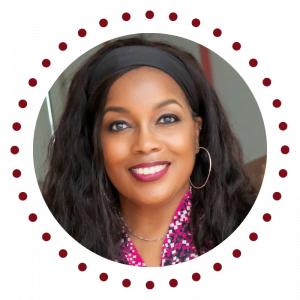
Want Karan to be Your Podcast Guest?
- Blended Workforces & the Gig Economy
- Critical Execution Tactics of High-performing Leaders
- Entrepreneurism & Leading Your Business
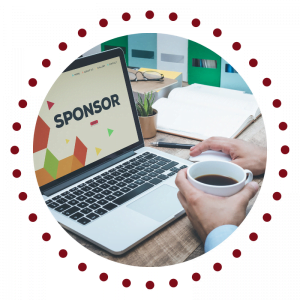
Want to be a Podcast Sponsor?
All sponsorships come with a featured spot on show notes pages.
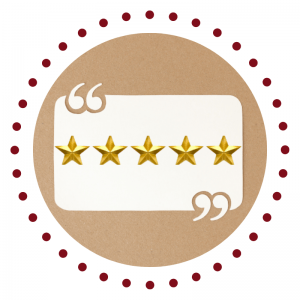
Like the Show? Please Leave a Review
If you like the show, it would mean the world to her if you left a quick review.
Your word is golden, so a HUGE thank you in advance!
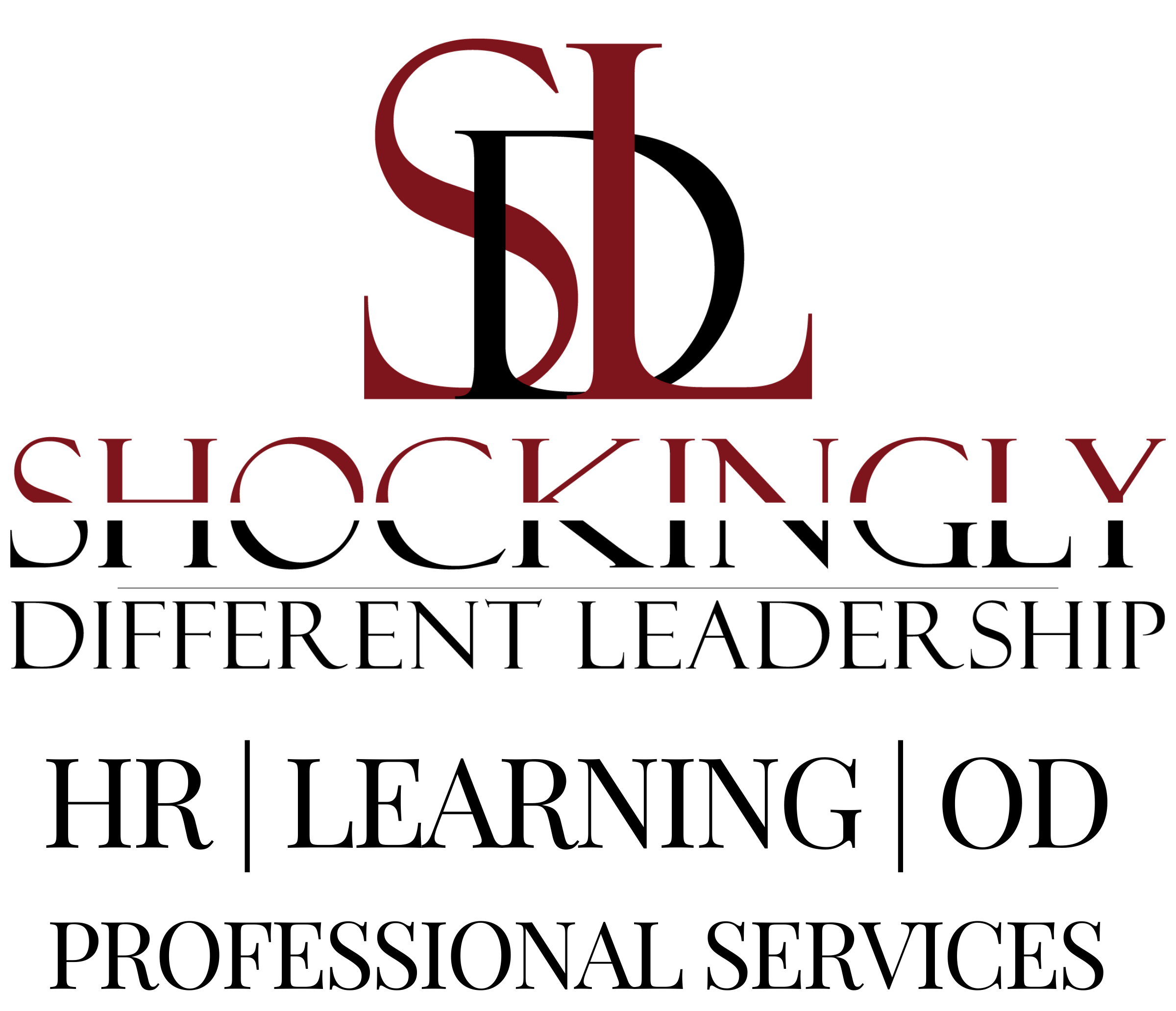
#KeepInTouch
via our podcast alerts
Subscribe now to discover why thousands of monthly listeners who are passionate about doing their best work prioritize time each week to listen to the Blended Workforces @Work podcast.
#AboutSDL
#WhereToFindUs
MAILING
4480-H South Cobb Drive
PMB 219
Smyrna, GA 30080
PHYSICAL
2121 NewMarket Parkway
Ste. 108
Marietta, GA 30067
#ContactOptions
Customer Service Email:
service@shockinglydifferent.com
Call or Text:
770-384-1103
#Office Hours
MON-FRI
8:30 AM – 6:30 PM
Weekends By Appointment


